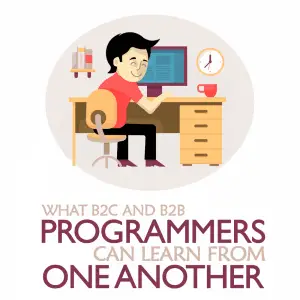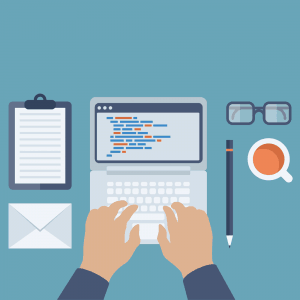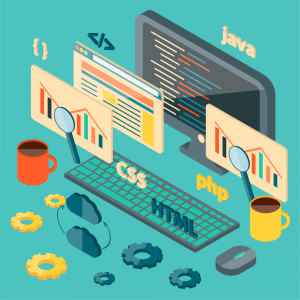
To understand, we must first consider what these classifications mean. Business-to-customer companies, or B2C, have a lot of programs based around customer services. They are undoubtedly working and building relationships with the average consumer as opposed to a professional or executive. That’s not to say their audience can’t be one and the same at times—it just entails a different focus.
Business-to-business companies, or B2B, on the other hand, are slowly working their way into a consumer-centric view, yet in an enterprise capacity.
They still relate because whether products and services go directly to the individual or not, the final product will reach a consumer somewhere down the line. Customer priorities should be first and foremost from the start for each type of team.
Each side of the B2B and B2C markets operates on a completely separate scale. B2B has different quotas, demands and, goals than a typical B2C, and the same could be said in reverse. The difference in needs brings different approaches to many of the same problems.
The impact of today's modern technology has lead to society wanting to have a steady hand in their business dealings, meaning the approaches of B2B and B2C are going to overlap eventually. Here are a few ways that programmers from these two business models can help each other.
B2B Versus B2C Developers
A developer is a developer, so they mostly handle the same tasks and concepts whether they’re in B2B or B2C. The real difference comes into play during initial specializations, or the proper design phase of a product or service.
B2B products and services are largely about improving or enhancing existing business processes. It's less about providing an “experience”—as you see on the consumer side of things—and more about providing more efficient ways to get things done. That’s why, you’ll notice, a lot of B2B tools and services tend to be a rehash of existing products or platforms.
As a developer, this makes your role more about the design and usability of a product or platform as opposed to the overall experience. You tend to spend more time considering UX design, interactions, engagements, and platform quirks. In other words, you’ll focus more on squeezing that extra bit of efficiency and performance out of a service than you would with a B2C product.
That’s not to say B2C developers don’t focus on the same at times.
A B2B cloud storage provider, for example, might be more focused on providing solutions and products for other businesses—think Amazon S3—whereas a B2C provider might be more consumer-oriented, like Dropbox or Flickr. Both platforms offer cloud services for the storage and retrieval of digital data, documents, and content, but you can see right from the start how they are remarkably different.
Dropbox, the nonbusiness service, might be used to store photos, resumes, personal documents, and the like. Meanwhile, Amazon S3 deals with web hosting, business and customer data, analytical datasets, and much more.
What Can B2B Learn From B2C?
With B2B slowly becoming more focused on the end product and customers, there is a learning curve being performed on all fronts to put consumers first instead of another business. The best place B2B programmers can start is in design.
1. Unified Design
While B2B services often have massive numbers of features, their web tools can be challenging to use. Simplicity and minimalism are becoming popular when designing programs because they're being built for anyone to use. Even if the B2B program has the best tools in the world, they're pointless if people can't figure out how to use them.

A better design is a start, but not the end, of making customers happy to use services. Perhaps your B2B doesn't rely on an interactive program but instead offers different services to the user. In this case, customers still want to know what’s going on without having any technical jargon or complicated websites in between. Consumers want transparency on where their money is going and updates on how products are coming along.
2. Community Updates and Involvement
Customers want to be involved in the business process—especially if their money is on the line. While it’s potentially tedious for the company to provide consumers with a step-by-step of every process, the routine can only bolster a B2B. A customer will feel more secure in their business, and the product will inevitably develop faster.
You'll notice many B2C companies share this kind of relationship with their customers throughout development and even after release. It helps ensure customers are getting exactly what they want out of a product or service and provides crucial insights to the business about the work they’re doing. For instance, you can easily pinpoint time wasted on features your audience doesn’t use and shift your focus elsewhere.
While transparency is a good thing, most consumers like to take matters into their own hands. If the B2B could allow services the customer can do themselves, this would be a massive advantage. Self-service is becoming more popular as more individuals want to take control of their spending. Not every B2B can provide a self-service portal, nor is self-service expected or even necessary. Regardless, giving the consumer power helps in the long run.
3. Autonomy and Repetition
Automation is becoming a common practice in the business world as well as in customer service, where tasks tend to be rote and repetitive. From minor responsibilities like emails and communications to major ones like developing forward-facing chatbots and programs, autonomy delivers simplicity and efficiency.
Contact can even be personalized by utilizing collected user data. Understanding the individual may be complicated when there are thousands or even millions of customers, but it’s possible with automated programs. The system could automatically retain and process information about users interacting with a platform. Then, it can feed this information to the customer service software to deliver more personalized, relevant experiences.
What Can B2C Learn From B2B?
B2C companies aren't changing their priorities anytime soon. The customer was always first in a B2C company, so they generally have customer service figured out. What a B2C programmer can learn from a B2B programmer is how to work smoothly on an internal level. The customer may come first, but business won't flourish if there's collapse from within.
1. Expansive Design Techniques and Controls
Again, the start lies in design quality. While most users like the simple way big companies like Google organize their very straightforward websites, some users want a more intuitive experience. If minimalism isn't working, perhaps adding more available features can be handy without contradicting the pro-minimalist approach for B2Bs.
B2Cs already understand what customers need and want. Added features should only serve to enhance the experience, not cause problems from overly complicated techniques or a cluttered interface. If a little more complexity is needed and if the customers want the added features, then there can only be positives to gain.
2. Enhanced Developer Skillsets

With B2B teams, in this regard, team leaders and decisions makers must be able to make rapid, yet accurate, choices about specializations. Eventually, this helps to grow the whole skill palette of the team, increasing support and operations efficiency. The same can be extended to the B2C world in that talent, reliability, and productivity become not only highly coveted values for team members but also honored as a priority.
This also can be attributed to how B2B companies operate with regard to scale. One significant difference between B2C and B2B teams is size, which changes their individual needs. While B2Cs could learn a lot from a B2B, there is no immediate need to do so. In fact, trying to operate on a larger scale than necessary would only hinder the business instead of help. For now, the skills a B2B can pass on make a shorter list than B2C customer service skills.
Mixing the Two Classifications Efficiently
At no point in the future will B2B and B2C companies become one entity. The two will always remain separate in the free market so long as big business is needed. But this doesn’t mean the lines don’t blur at times.
Whether because of the American recession or millennials simplifying technology, B2B companies are becoming more customer-centric, and B2C companies are becoming more efficient and performance-focused. As you’d expect, this is having a profound effect on the two classifications.
As long as competition remains healthy, there will be more ways to pander to customers than ever before. In the end, there may not be a merger, but the two entities may become seamless in structure. It’s more about learning or improving the various platforms to deliver something fresh, more efficient, and more satisfying.
